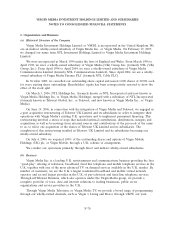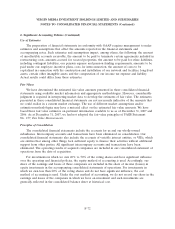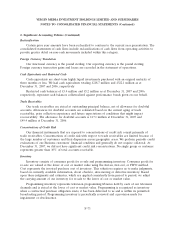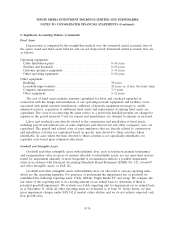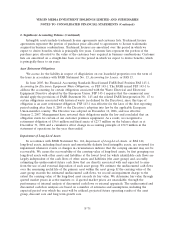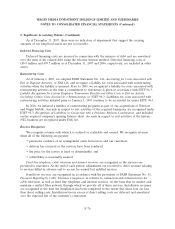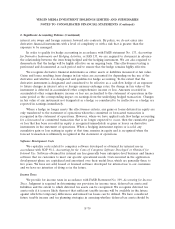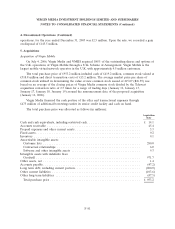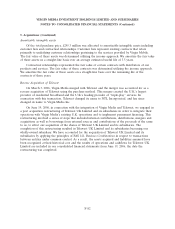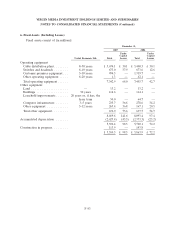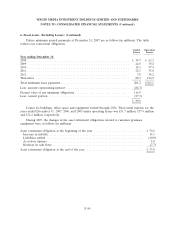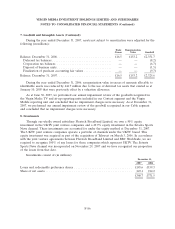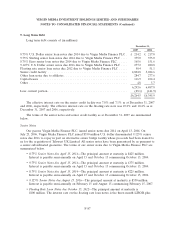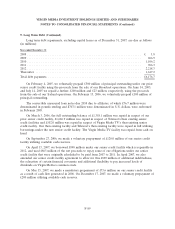Virgin Media 2007 Annual Report Download - page 165
Download and view the complete annual report
Please find page 165 of the 2007 Virgin Media annual report below. You can navigate through the pages in the report by either clicking on the pages listed below, or by using the keyword search tool below to find specific information within the annual report.VIRGIN MEDIA INVESTMENT HOLDINGS LIMITED AND SUBSIDIARIES
NOTES TO CONSOLIDATED FINANCIAL STATEMENTS (Continued)
2. Significant Accounting Policies (Continued)
interest rate swaps and foreign currency forward rate contracts. By policy, we do not enter into
derivative financial instruments with a level of complexity or with a risk that is greater than the
exposure to be managed.
In order to qualify for hedge accounting in accordance with FASB statement No. 133, Accounting
for Derivative Instruments and Hedging Activities, or FAS 133, we are required to document in advance
the relationship between the item being hedged and the hedging instrument. We are also required to
demonstrate that the hedge will be highly effective on an ongoing basis. This effectiveness testing is
performed and documented at each period end to ensure that the hedge remains highly effective.
We recognize derivative financial instruments as either assets or liabilities measured at fair value.
Gains and losses resulting from changes in fair value are accounted for depending on the use of the
derivative and whether it is designated and qualifies for hedge accounting. To the extent that the
derivative instrument is designated and considered to be effective as a cash flow hedge of an exposure
to future changes in interest rates or foreign currency exchange rates, the change in fair value of the
instrument is deferred in accumulated other comprehensive income or loss. Amounts recorded in
accumulated other comprehensive income or loss are reclassified to the statement of operations in the
same period as the corresponding impact on earnings from the underlying hedged transaction. Changes
in fair value of any instrument not designated as a hedge or considered to be ineffective as a hedge are
reported in earnings immediately.
Where a hedge no longer meets the effectiveness criteria, any gains or losses deferred in equity are
only transferred to the statement of operations when the committed or forecasted transaction is
recognized in the statement of operations. However, where we have applied cash flow hedge accounting
for a forecasted or committed transaction that is no longer expected to occur, then the cumulative gain
or loss that has been recorded in equity is recognized immediately as gains or losses on derivative
instruments in the statement of operations. When a hedging instrument expires or is sold, any
cumulative gain or loss existing in equity at that time remains in equity and is recognized when the
forecast transaction is ultimately recognized in the statement of operations.
Software Development Costs
We capitalize costs related to computer software developed or obtained for internal use in
accordance with SOP 98-1, Accounting for the Costs of Computer Software Developed or Obtained for
Internal Use. Software obtained for internal use has generally been enterprise-level business and finance
software that we customize to meet our specific operational needs. Costs incurred in the application
development phase are capitalized and amortized over their useful lives, which are generally three to
five years. We have not sold, leased or licensed software developed for internal use to our customers
and we have no intention of doing so in the future.
Income Taxes
We provide for income taxes in accordance with FASB Statement No. 109, Accounting for Income
Taxes. Judgment is required in determining our provision for income taxes, deferred tax assets and
liabilities and the extent to which deferred tax assets can be recognized. We recognize deferred tax
assets only if it is more likely than not that sufficient taxable income will be available in the future
against which the temporary differences and unused tax losses can be utilized. We have considered
future taxable income and tax planning strategies in assessing whether deferred tax assets should be
F-79



